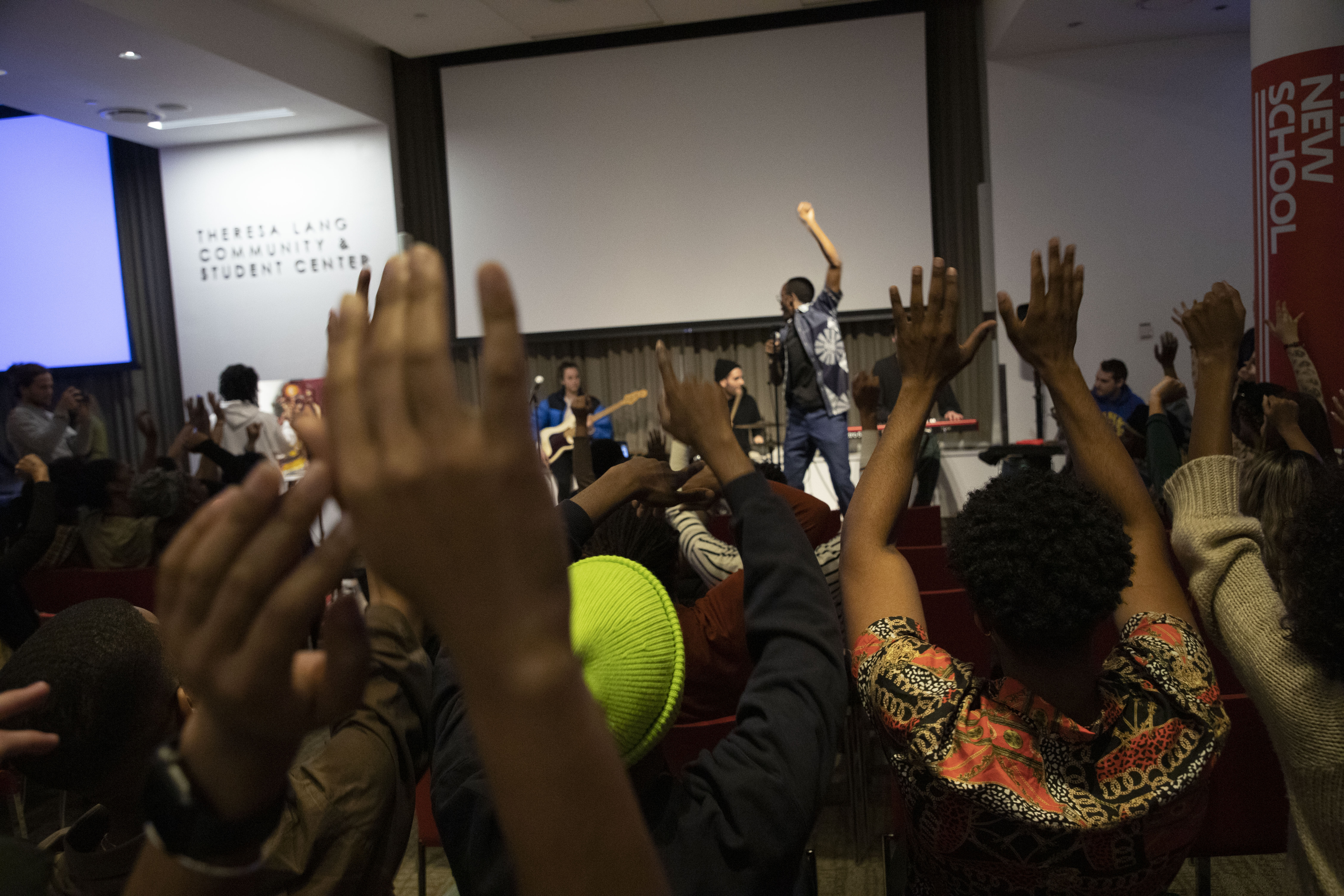“The Black Imagination: Black Artists’ Launch Party” opened on February 29th in celebration of the exhibit’s opening. The Black Student Union’s first public event featured and celebrated Black artists at The New School. The launch party took place the night after “The Black Panel,” a film screening, discussion, and “space for current students to unpack the significance of our presence as Black students at a predominantly white institution, and discover ways to support and sustain our community within the institution,” according to the event’s webpage.
The “Artists’ Launch Party” began with guests appreciating the exhibition of photographs, paintings, and other visual art pieces. The event started off with time to explore the visual gallery and enjoy vegan Ethiopian catering from Bunna Cafe in Brooklyn. As the night unfolded, attendees were invited to watch live performances, which included everything from spoken word to a bassoon composition. Towards the end of the night, guests were on their feet, dancing and singing along with the performers on stage.
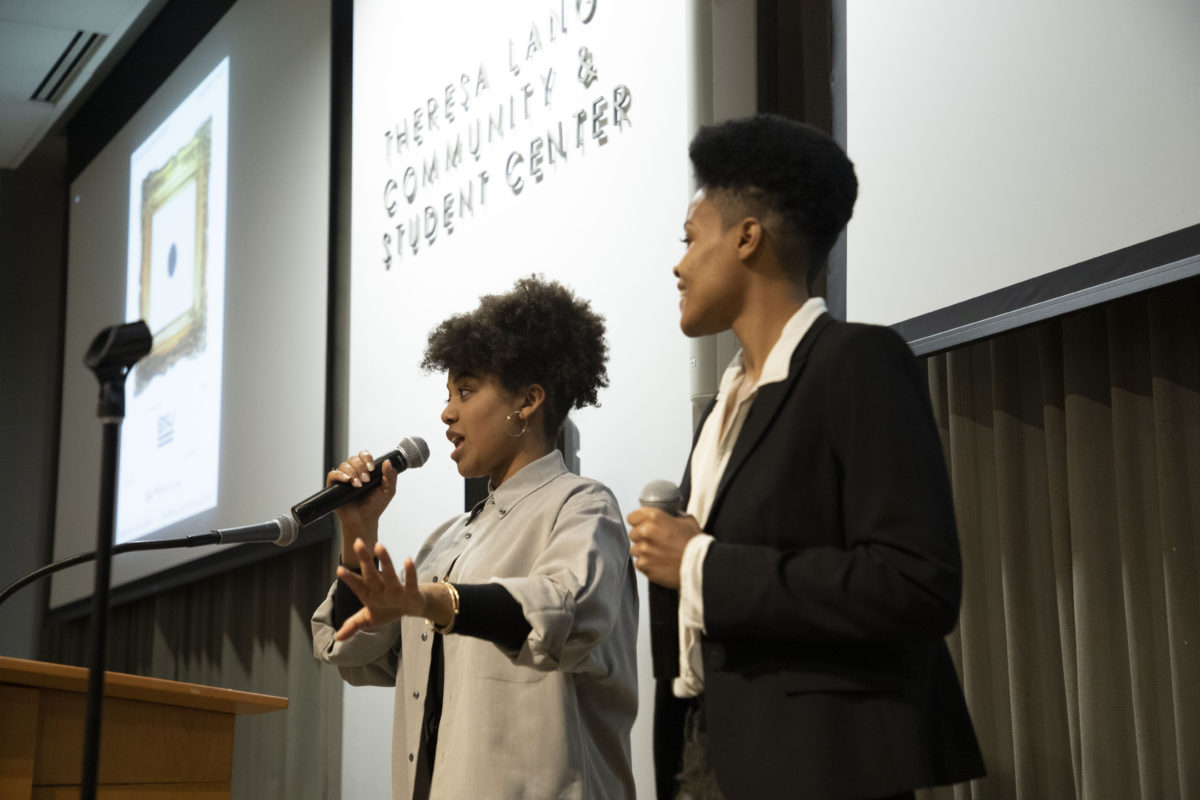
“Sometimes we have to be the ones to take up space,” said BSU curator Anya Isabel Andrews. “We feel that sometimes we have to celebrate ourselves because no one’s going to do it for us,” Andrews told the audience.
Blasian Womack, a 19-year-old BFA Fashion Design student was among the approximately dozen visual artists showcasing their work at the event. Womack’s display was titled “BAL.,” an acronym for Black American Love.
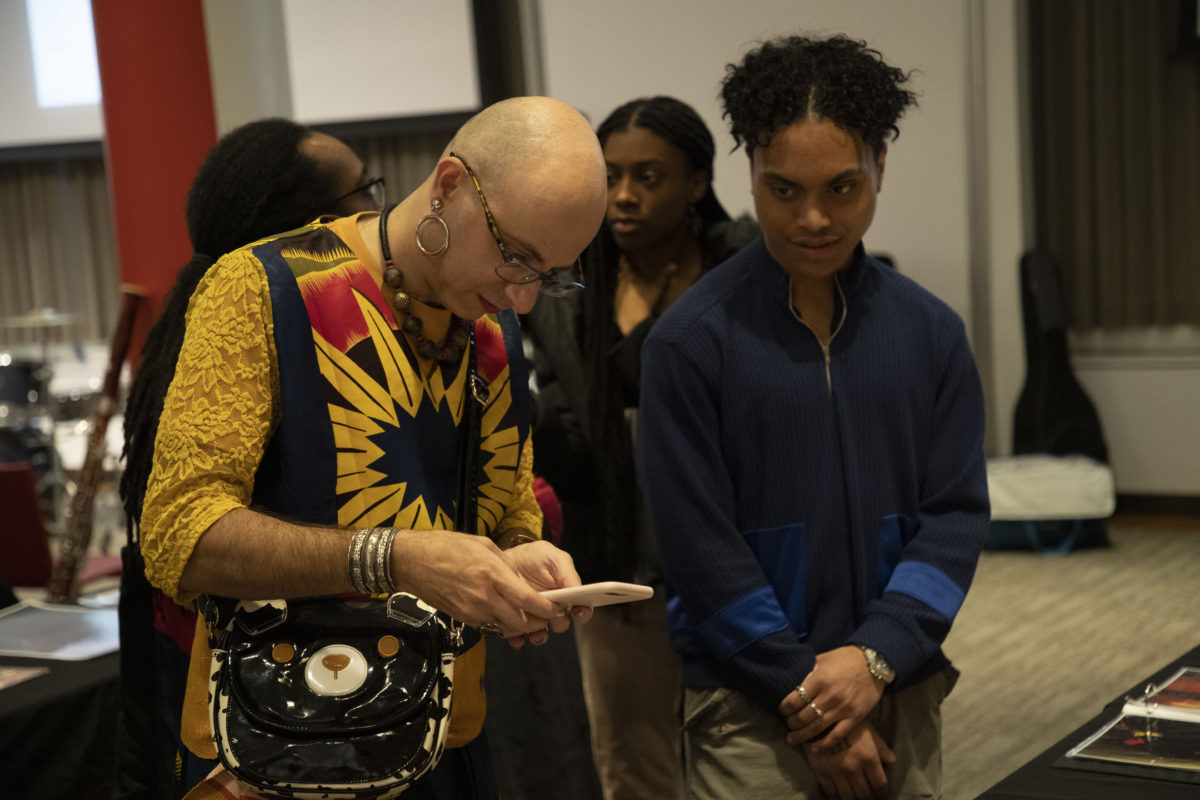
The collection included archival photos of Womack’s grandparents and family members as well as photographs shot by Kobe Boateng and directed by Womack in Woodbridge, Virginia, where Womack spent many years of his adolescence.
Womack drew inspiration from an assignment in his Design Studio class last semester. “The topic that we had to base our collection on was sanctuaries, and my sanctuary was family,” said Womack. He approached the assignment by creating a mood board of music, TV shows, and cultural influences that his parents exposed him to, from TLC to Love and Basketball. This semester he chose to expand upon the original project by making a panel of images that represented the “contrast of showing how love in the Black family transcended through time and how it’s changed or how it’s captured,” Womack said.
“Through these photos, it’s not fetishizing Black People, it’s showing what real Black people do, what normal people do,” said Womack.
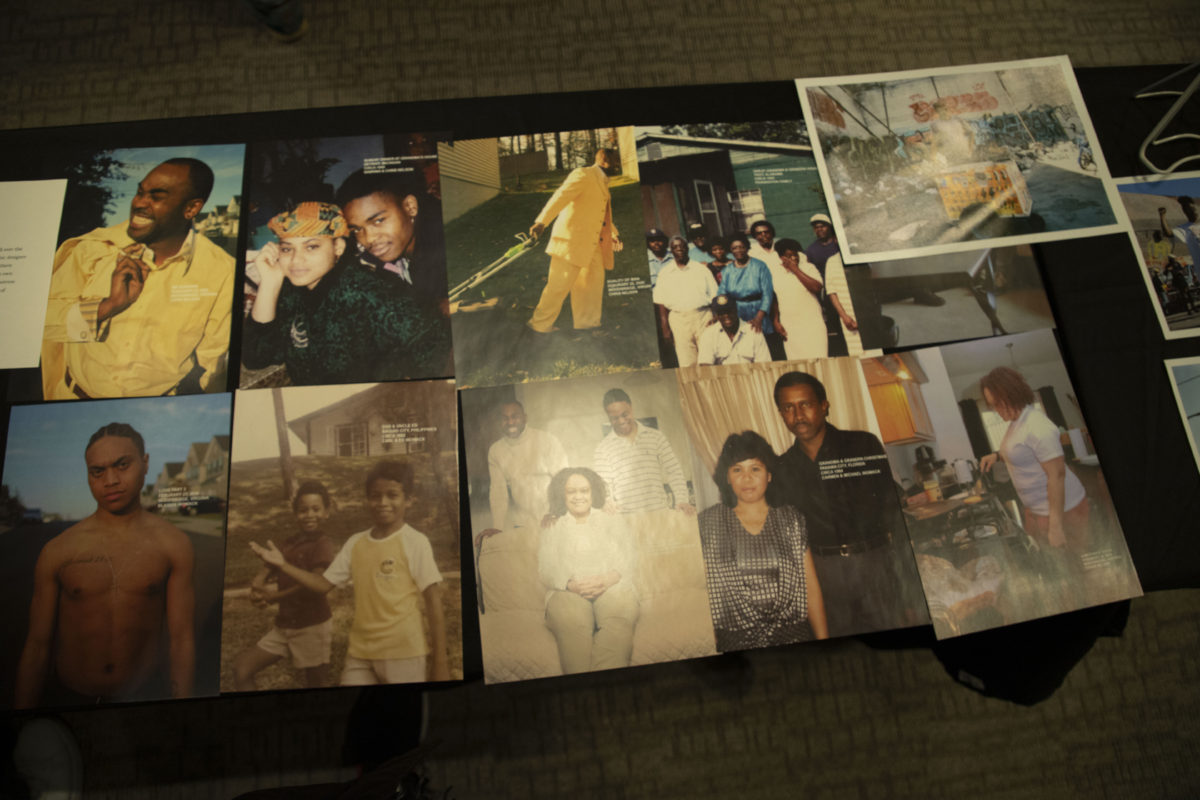
Womack said that his work in the gallery was a special opportunity. “I love the Black community, I like that exclusivity, because it’s not meant for everybody, and that brings more value to the work because you can become more personal in a space that is catered to you,” Womack said.
Design and Technology student Ramsey Daniels also showcased his art. The mixed media piece took the form of both a sculpture and a lamp, and was referred to by the artist as “An offering to Afrofuturism.”
A multi-genre creative movement, Afrofuturist artists include well-known artists such as Octavia Butler, Solange Knowles, and Janelle Monáe.
“It’s different for everybody,” said Daniels, describing the genre. “But for me, it’s how I envision Black people in the future,” he said. “I think that’s something we need to take seriously because if we’re not able to see ourselves in the future, our future will be messed up in a sense.”
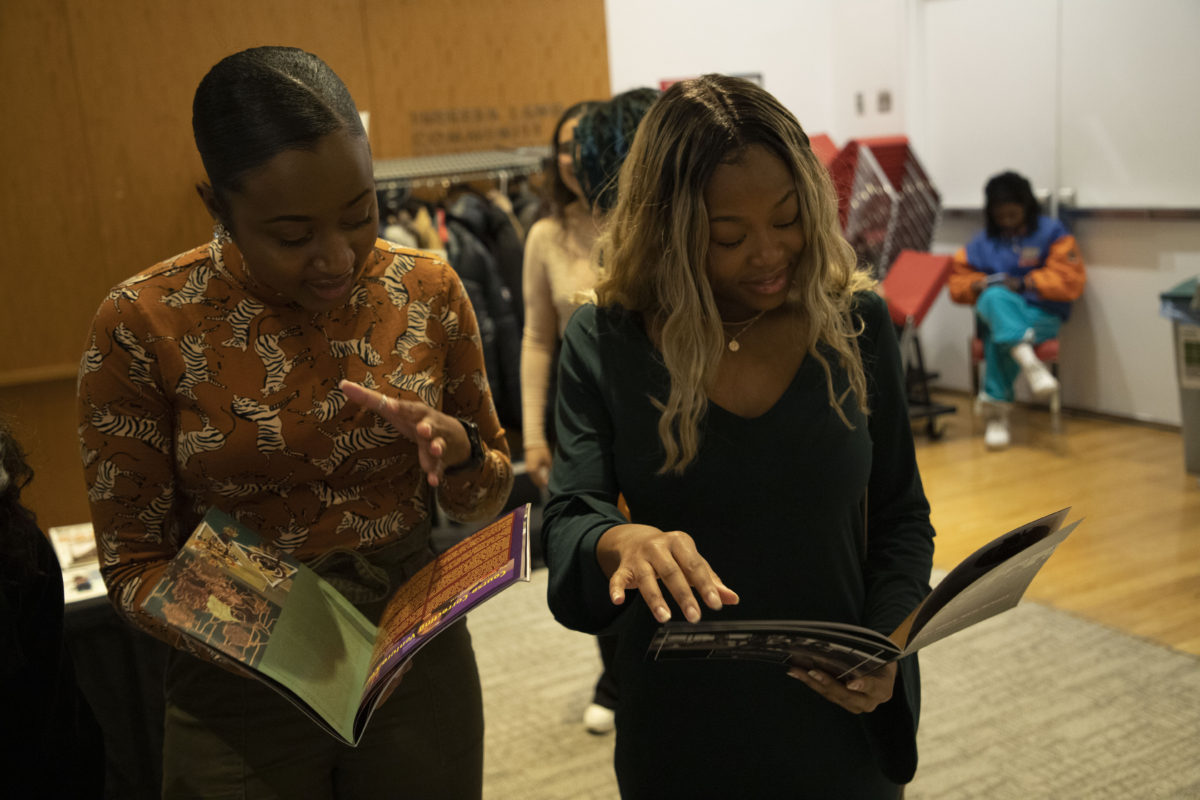
Ahmrii Johnson, a third-year fashion and design student, exhibited her painting “Goombay Man.” “The Goombay Man” is wearing a vibrant Junkanoo headpiece, mask, costume, and garment. Johnson’s work was “a representation of Junkanoo, a pride parade sort of like carnival where they’re celebrating liberation from the French and liberation from slavery,” she said.
“That for me holds a lot of meaning for myself, my heritage, and it’s also a way for me to reconnect with that. Being Caribbean-American and a child of immigrants, being able to connect to my home island is really important to me,” said Johnson.
“Blackness in art by Black creatives is one of the most transformative feelings or experiences for me as an artist and as a person. I think it’s healing,” Johnson said.
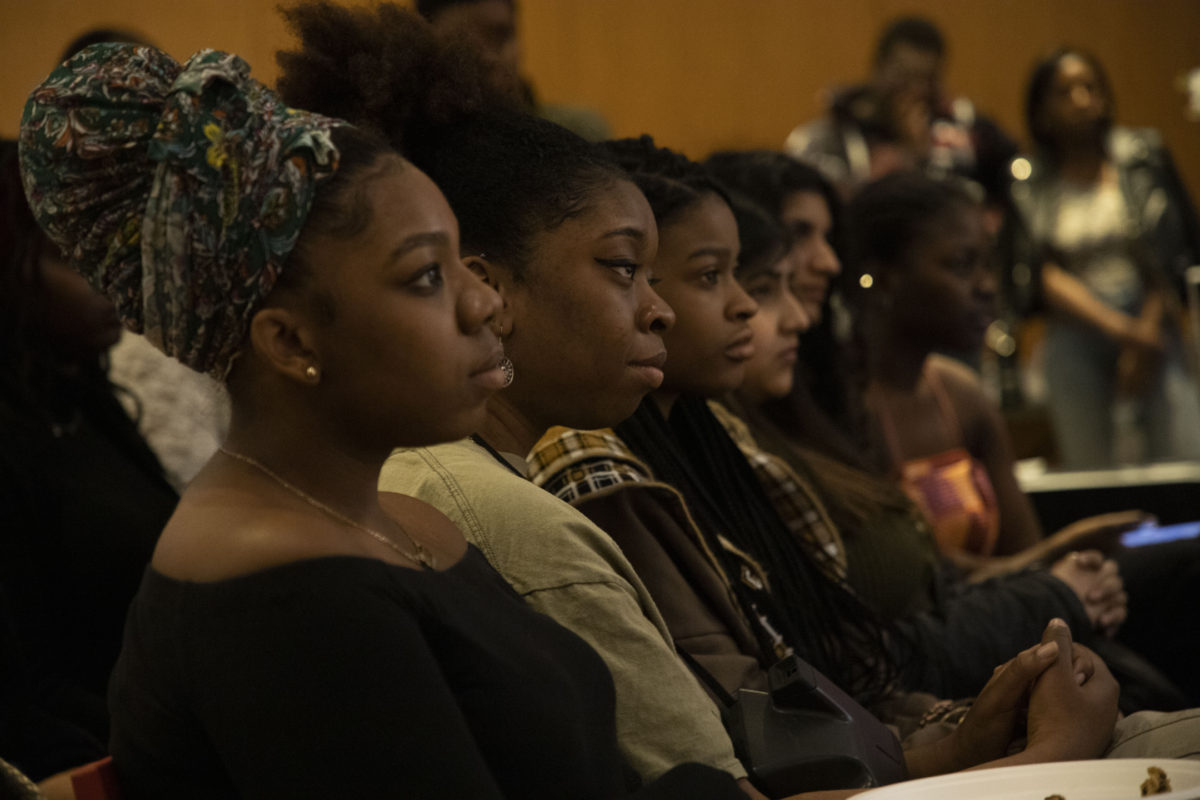
Johnson said she went to a Caribbean community in Crown Heights, Brooklyn that curates the parade. Johnson worked with them “to help them develop their programs, how they organize the parade every year, make the costumes, and brand themselves,” she said.
“The New School has the capability to show a lot of work, give a platform to people, but I think that there’s an expectation for us to do it for ourselves, to go ask the questions and as the organizers, we learn how difficult it can be to put on events like this,” Andrews said. “This is a practice run for the world outside of The New School, it gives us a lot of opportunities to explore, and make mistakes, and to learn and keep going,” she said.
Andrews said the team decided to make this their first public event because, “It’s not just about celebrating within our community, but extending our community, and making sustainable community which means making networks.” The event was titled “Black Imagination,” because “We were talking about Black imaginaries, and this kind of Afrofuturism surrounding creativity especially in the Black community, but the Black imagination can’t be limited,” Andrews said.







